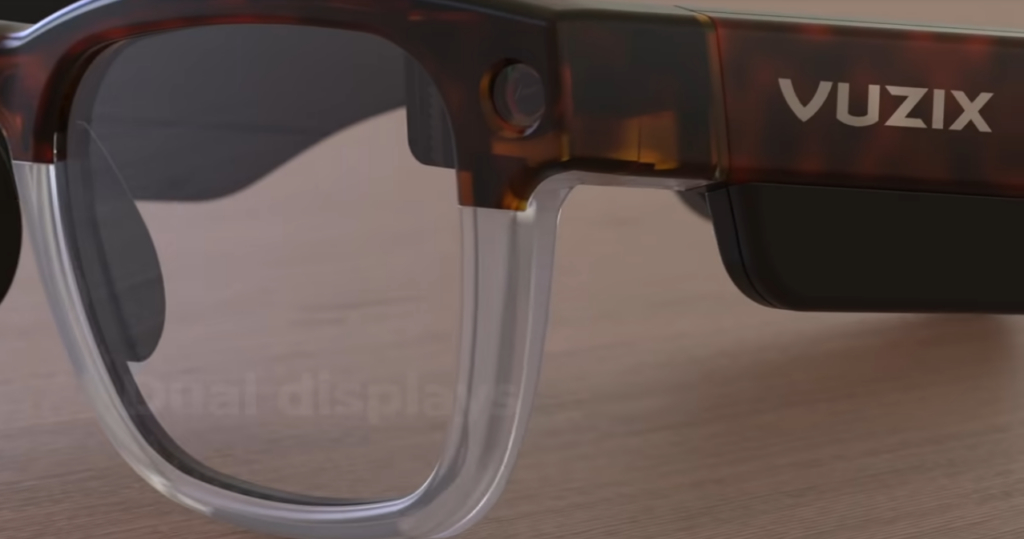
Augmented Reality (AR) glasses are now looking remarkably stylish. Forget bulky Virtual Reality (VR) headsets and piratical Google Glass. Optoelectronics company Vuzix (Rochester, NY) has announced a pair of stereo vision glasses offering a head-up display (HUD) of the smartphone in your pocket. Or car. Or back home, actually.
CES 2021 (Jan 11-14), a consumer electronics show, handed Vuzix three CES2021 Innovation Awards for their Next Generation Smart Glasses (NGSG). Vuzix are saying we can expect the NGSG in the shops (pandemic permitting) summer 2021.
How did this happen?
Paul Travers founded Vuzix in 1997 with a desire not only to combine new technologies in innovative ways but also to provide solutions to customers’ problems. Vuzix has focused its AR product development on solving specific problems for specific customers. The Vuzix business model has therefore been B2B sales of wearable devices that: enable service engineers and technicians to follow instructions in manuals hands-free; allow clinicial experts to get a carer’s eye view of a patient; give advanced understanding to a surgical team awaiting the arrival of paramedic’s casualty.
Existing Vuzix products from the BLADE to the M4000 have exploited state-of-the art light sources, optical components and low power high performance microprocessors. Their latest NGSG exploits the latest microLED displays, Internet of Things chips and waveguide optics.
Probably the most significant new technology is the introduction of microLED light sources which offer high brightness, high spatial resolution displays with very low power consumption. Matching the colour detectors in the human eye, red green and blue microLED displays are combined in the glasses to project colour images to a focal plane in front of the wearer. MicroLED packages are indeed awesome things. Vuzix source their microLED components from Jade Bird Display (Shanghai, China). Incredibly, a monochrome display panel with 6000 DPI GaN diodes is smaller than a grain of rice! Jade Bird Display (JBD) claim their components are the worlds smallest VGA resolution displays. More information on Jade Bird Display components can be seen below.
So just how far can this technology go? how slim can the glasses’ frames be made and how big can the projected 3D images become?
Arguably the limit of the technology is set by the dimensions of the microLEDs themselves. JBD use GaN diodes in their displays that are tiny, just 4 microns in diameter. Microelectronic fabrication techniques can certainly make smaller devices. CMOS technology for example can produce structures on silicon wafers that are tens of nanometers in diameter. When a diode junction has to operate simply as a switch, subtle changes in material properties that result from their small size are not critical. The same isn’t true for the external optical properties of an LED. As the diameter of an LED gets smaller, its properties are increasingly determined by its edges rather than its bulk. Edge effects change the emission wavelength of the light and reduce the efficiency of the microLED device.
To really drive AR smart glasses and other display products forwards requires both increasing the resolution of microLED components and reducing their cost. This is challenging and requires improved test and inspection tools that can quickly detect defects on whole semiconductor wafers and analyse individual defects less than the size of a single pixel.
We will have to wait until later this year before we can get our hands on the latest AR glasses technology but microLED test and inspection instrumentation is available from Corbeau Innovation now, click below for product information.